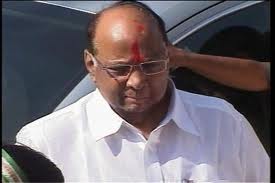
New Delhi, July 20: Nationalist Congress Party (NCP) chief Sharad Pawar and party member Praful Patel sent in their resignations to Prime Minister Manmohan Singh, sources said on Friday.
Pawar was said to have been upset over not being made number two within the UPA government.
The duo had said they will not attend their offices on Friday.
In fact, for a second time on Thursday, Pawar and Patel had skipped the Cabinet meeting despite the fact that on agenda was a matter relating to Pawar's ministry.
Sources said the rift was over the number two slot. With Pranab Mukherjee gone, Pawar, as per seniority, should have been made number two.
Congress, however, argued that the NCP had only nine MPs while Congress was the largest constituent of the UPA and hence could choose the number two. It's Defence Minister AK Antony who got the slot. This upset the NCP.
NCP sources also said Pawar was upset by the Congress's witch-hunting and lack of gratitude.
Pawar is believed to have been angry that some of his nominees for the Governor's post and for chairmanship of NABARD and NAFED were rejected. Certain projects with which Sharad Pawar was involved were not cleared by government. Also, he accused the Cabinet of dragging its feet over forward trading.






Comments
Add new comment